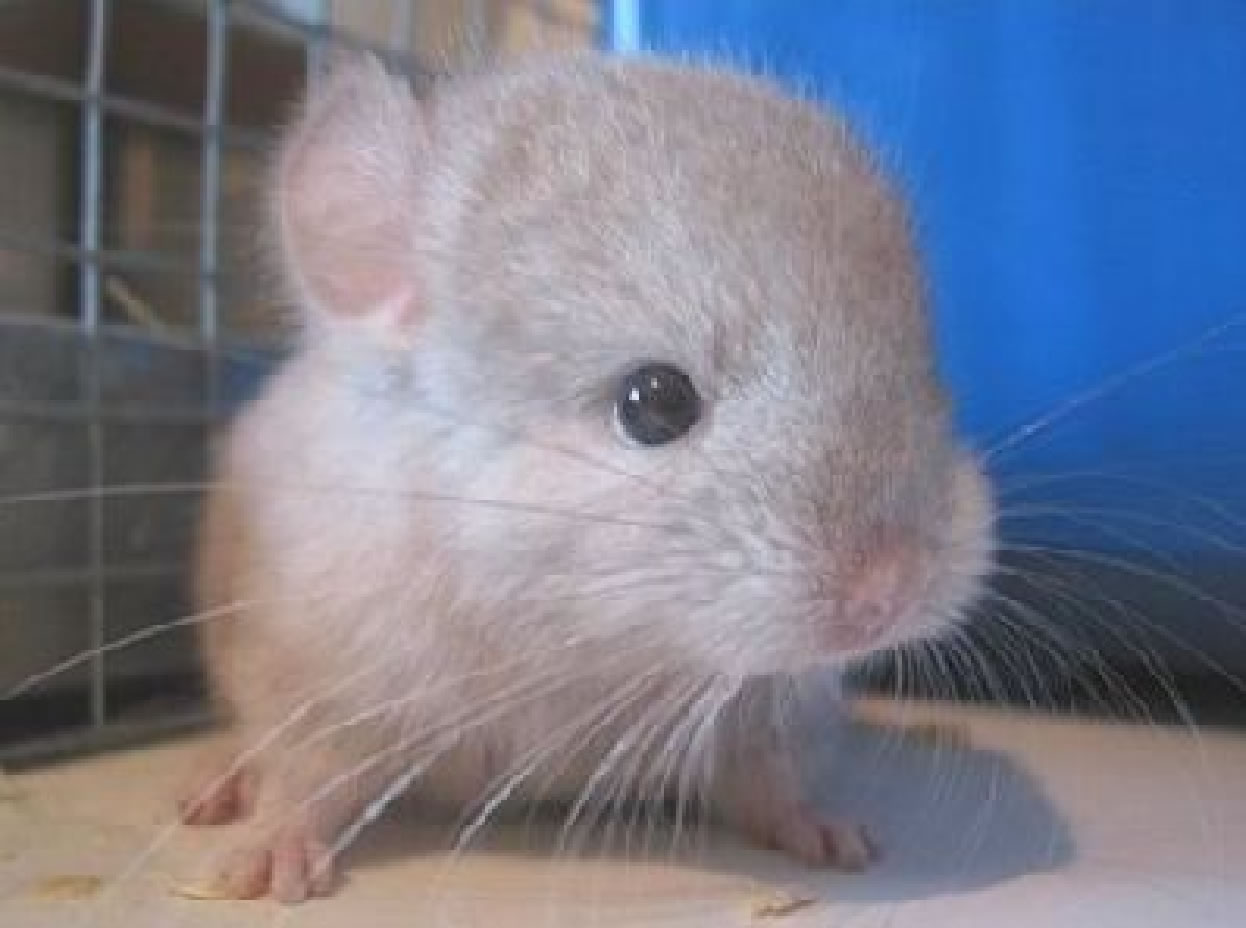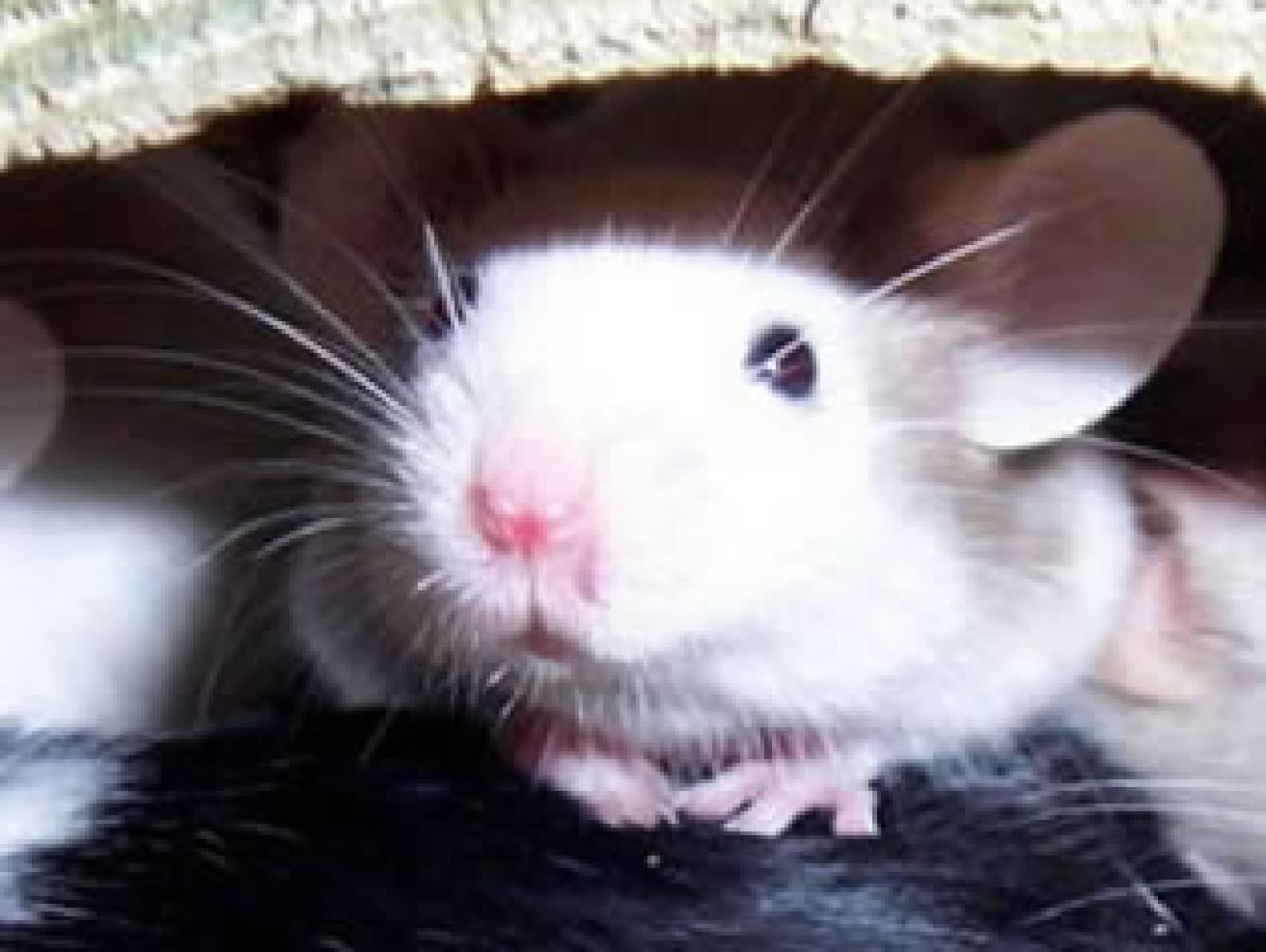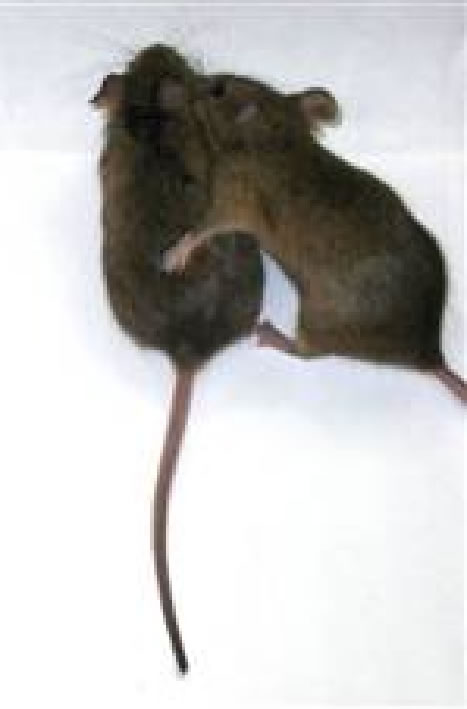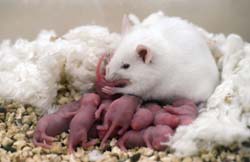 Pheromones in Mice
Pheromones in Mice
Biology 342 Fall 2007
Written by: Emmeline Chuu and My Linh Nguyen

Reed College
3203 SE Woodstock Blvd,
Portland, OR, 97202
nguyenm@reed.edu
chuue@reed.edu
Last Modified November 2007
Adaptive Value


[Source: http://www.funnyremix.com/archives/2006/09/24/cute-mice-and-little-animals-photos/
and http://www.mypets.net.au/petimages1/mice%201.jpg]
The study of adaptive value observes the function of a behavior in order to delineate the evolutionary advantage provided by this behavior. The evolutionary advantage of behaviors can be characterized by the ability of that genotype to propagate its species, in terms of survival, reproductive value, and fitness.
The effect of a dysfunctional vomeronasal organ (VNO) in mice produces aberrant changes in behavior. These adaptive values of the VNO can be inferred from these changes in behavior in mice with dysfunctional VNO.
These changes include:
- an inability to differentiate between sexes [Leypold et al., 2002]
In TRP2 knockout mice (mice with genetic mutations which inhibit expression of TRP2), Leypold et al. found that male mice would not be able to distinguish between the sexes without the ability to distinguish between male and female pheromones. Consequently, 61% of male TRP2 mutant mice attempted to mount other males and showed no dramatic preference when females were present. This behavior would be extremely detrimental to the reproductive fitness of mice if it were present at a notable scale.
Therefore, we can infer that the presence of the VNO and, subsequently, the ability of mice to detect pheromones, increases the reproductive fitness of the species.
[Source:http://msnbcmedia3.msn.com/j/msnbc/Components/Photos/070806/070806_mouse-sex_med_1p.widec.jpg]
- the loss of aggressive behaviors [Leypold et al., 2002]
In the same Leypold et al. study, it was found that inexperienced mutant mice demonstrated little to no aggressive attacks on intruder males, a behavior that is found in inexperienced mice with functional TRP2 genes. Since it has been found that experience with female mice increases this aggressive behavior, an experiment used the same mice after exposure to females and found a 3-fold increase of aggressive behaviors in the wild-type mice, but no such increase was found in mutant mice.
The inability to express aggressive behaviors in mice may result in the decrease in reproductive fitness as well as the survival value of mice with a dysfunctional VNO. Further, these mice would then proliferate their genotype less than the mice with a functional VNO. These inferences support the idea that the VNO is critical in maintaining fitness in mice and may be a selectively adaptive trait.
- absence of maternal aggression [Leypold et al., 2002]

Although females do not generally attack intruders, lactating females exhibit extremely aggressive behaviors towards intruder males. Leypold et al. choose to study this behavior in females lacking a functional TRP2 gene, and found that none of the mutant females exhibited aggressive behaviors after pups were removed and an intruder male was introduced. Starkly contrasting these results, 5 out of 11 control females exhibited aggressive attacks usually marked by high frequency of biting.
This loss of this aggressive behavior in mutant mice could significantly decrease the fitness of her offspring in their natural setting. This aberrant behavior would likely reduce the mutant females’ ability to proliferate their genotype into viable offspring, leading to a decrease in fitness for those that exhibit this genotype.
[Source: http://www.news.wisc.edu/9991]
- expression of male behavioral phenotypes in female mice [Kimchi et al., 2007].
In a study performed by Kimchi et al., TRP2 mutant female mice were also found to have decreased expression of maternal aggression behaviors, but interestingly, also displayed stereotypical male behaviors such as mounting, pelvic thrust, solicitation, anogenital olfactory investigation, and emission of ultrasonic vocalizations towards males and females. This change in behaviors indicates that the VNO may not only be an important aspect in sexual differentiation for reproduction, but may in fact prescribe sexual status in mice. Loss of this would have detrimental effects on the reproductive status of the species, as females may become less likely to exhibit lordosis.
If these changes were to be expressed variably on the population of mice, they would have an unprecedented effect on the fitness of the Mus musculus species. For this reason, it seems that the development of the VNO may be an adaptive trait that is selected for within the species. Further, the ability of the VNO to detect pheromones may add to the overall fitness of the species, as well as increased reproductive capability in individuals.